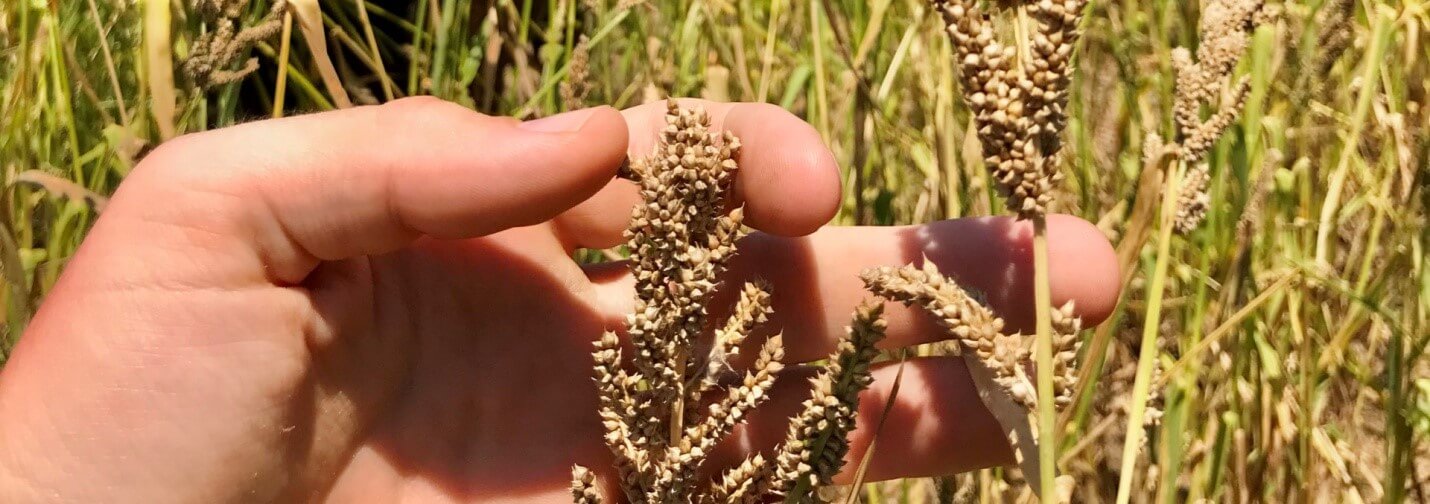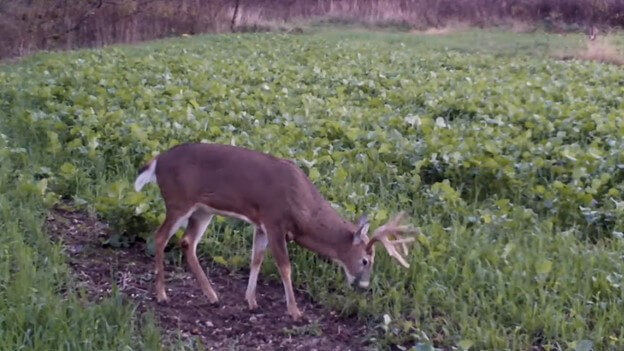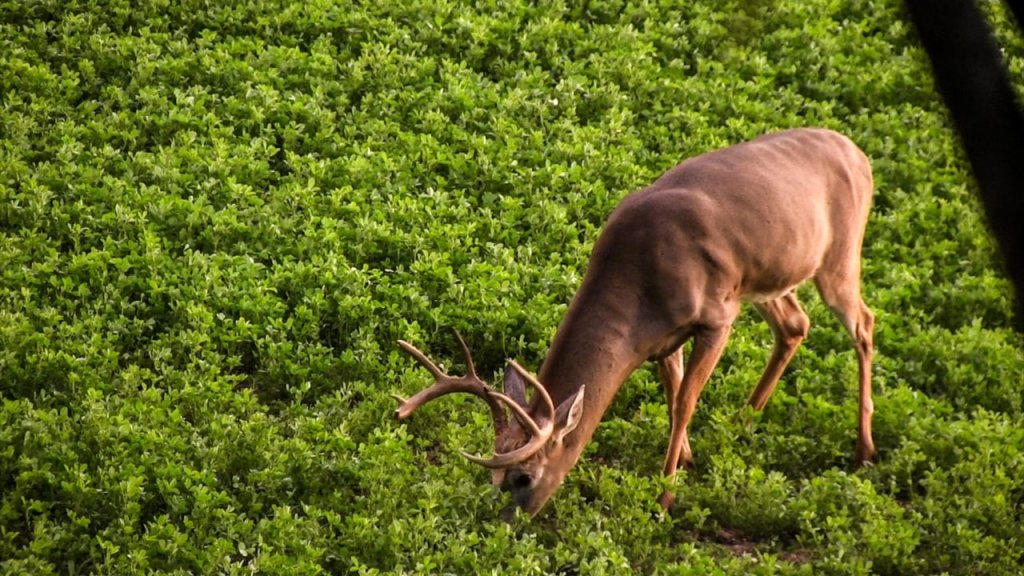Whether you are just an animal lover or a hunter, food plots are a great way to use up the extra space in your property to cater to the wildlife and put it to some good use. It helps the wildlife around you properly find enough food, especially during the winter times when it is difficult to find it, and having the right kind of crop when the animals absolutely need it is a great way to attract them to you.
But having a food plot alone is not enough. You need to take care of many things, including the right selections of seeds, time, and location, with the right food plot fertilizers to make your plot thrive.
Often, people make some mistakes unknowingly that can hamper all their effort and progress.
So, if you want your food plot to work and serve its purpose, then you must make sure that you do not make these common food plot mistakes and your crop growth is not hindered by anything.
Let us Begin!
1. Planting the Wrong Kind of Plant

a widespread mistake that people often make is not planting the right kind of plant. You might go for planting corn or soya beans that are good for the animals and a great source of protein, so they will help keep the animals healthy and provide nutrition to their children. Still, at the same time, these crops are known for not taking the browsing pressure. If these crops are spread over 2-3 acres, they can still withstand the forage as the pressure will get divided but not when it is on a small plot of land.
On the other hand, if you plant crops like clover or brassica seeds, then they will not just attract the species (especially deer) to your food plot. Still, also, these plantations are capable of withstanding high browsing pressure even on a smaller plot. This will help you retain your crops for a longer period, and you will not have to worry about the forage pressure at all.
2. Not Doing A Soil Test
Having a soil test done and knowing what kind of soil you are dealing with is significant for any vegetation or planting, but we still tend to forget to do that at times. It simply goes out of our minds, or some might not understand the significance of it. The benefit of having your soil tested is that you will know exactly the composition of your soil, its type, and the nutrient level is.
This will help you in planting the right kind of plant that can grow on that type of soil and add the right kind of food plot fertilizers. Without knowing what kind of soil you are dealing with, you could be wasting a lot of time, effort, and money, planting the wrong kind of plant and adding the wrong kind of fertilizer.
To do this, you can buy a soil test kit which you will get from any gardening store at just a minimal cost. And then you can take a little amount of your soil and mix it in a bucket of water to form a mixture, then put it in an envelope and send it for testing, and you will get all the details of your soil.
3. Not Using an Herbicide
Not using an herbicide when you are just starting to set up your food plot is a big mistake. Be it the crops of your food plot or any other crop, and crops cannot grow properly when you plant them amidst any different type of plantation, no matter which species it is. As it is popularly believed, if the plot is not cleared out, the existing wild plants can overwhelm and negatively influence the growth of the new ones. So, for that, you will first have to clear out your entire plot and get rid of the weeds.
However, if you do not own the heavy machinery required for the job, then picking out the weeds all by hand is a very time-consuming job. Also, it will not be of any use as the weeds will grow back in some time. So, the best thing to do in this case is to use an herbicide. Spray it all over your plot and give it some time to do its work. Once the weeds are gone, you can start planting your crops without having to worry about the weeds stunting their growth.
4. You Are Missing the Planting Window
Again, this is a widespread thing to keep in mind, whether it is for your food plot or any other kind of plantation. You cannot plant a seed outside its season. If you are planting it at the wrong time, either it will not germinate, or it will die from frost (if it is winter). It would help if you planted the seeds according to their season so that they are ready at the right time for the animals to feed on them.
Now, how do you understand the window? Let us say you are planting a winter crop; you should try to plant it at least 2-3 months before expecting the first frost of the year. Again, if you plan to plant a spring crop, then the time window for you will be somewhere between February to mid-June. The exact time depends on your region. To get the best results and get your crops ready on time, make sure you do not miss the planting window.
5. Planting It in The Wrong Location

This goes without saying, you are planting the crops to attract the animals (or, in some cases, a particular species of animals), so you need to establish your food plot in a place where these animals will be present. For example, your food plot needs to be in the countryside, preferably near the woods. Let us say that you are planning to attract deer, then first, you will have to find out if you can find deer in that location. Animals do wander around in search of food, but they do not leave their own territory.
So, you will have to make sure that you and your food plot are near them and easily accessible to them. However, when you are moving to a spot, apart from the availability of the species, you will also have to make sure that this area is fit for the crops to grow. The soil should be apt, and the area should receive moderate sunlight. Balancing both the needs of the animals as well as the crops is the key element here.
6. Not Planting Them in The Right Style
Another important factor in ensuring that your food plot thrives is to plant it the right way. Different seeds have different kinds of requirements when it comes to their planting style. You must plant the seed at an optimum depth (which differs from seed to seed) to ensure that they grow. If it is not done properly, your seed will not get the ideal conditions of germinating and might die under the soil itself.
Generally, small seeds like clover and brassica need to be planted closer to the surface so that the rainwater can take care of their water requirement. On the other hand, large seeds like corns need to plant a little deeper (at least 2-3 inches deep) to ensure they germinate. If you are not sure about the right depth for your chosen seed, then you should consult the person you bought it from.
7. Not Taking Care of Your Food Plot
Your food plot needs just as much care as any other plot of crops, so if you plant the crop and leave it to grow on its own, then you will not get any result. Your food plot needs constant care, and you need to mow it from time to time to clean up the mess and rejuvenate its growth. Also, you need to make sure you get rid of the weeds as they might keep coming back and hamper the growth of your plants.
Apart from that, adding some good food plot fertilizers is also a great idea to enhance the growth of your crops. Remember, just because you are planting it for animals does not mean you should ignore the grooming process; if your crops are not doing good, you will not attract animals. Your job does not end with planting the seeds.
8. Adding Up Proper Food Plot Fertilizer
The previous point brings us to this point. To ensure that your food plot grows properly and healthily, you need to add proper food plot fertilizers. Finding the right food plot fertilizers is not rocket science. You need to know two things; the first is what kind of soil do you have. This question will be answered when you do the soil test, which we discussed in the beginning.
After that, you need to know the requirements of your crop and what kind of fertilizer they need. If you cannot figure out all this on your own, you can consult a gardening expert or the person you bought the seeds from. Adding the right kind of fertilizers is essential if you want to grow your crop.
9. You Are Not Planting Enough Crops
This could be another big reason. It would be best if you planted sufficient crops so that they can come back again once the animals come to feed. It should not be the case that the number of crops in your plot is so less that it is all over after one day of feeding the animals. Your purpose is to retain the animals and make sure that they come to your plot repeatedly. That is how you will build a relationship with them. A one-time browsing and feeding session will not serve your purpose. So, make sure you grow enough crops for that season
10. You Are Dealing with The Animals in The Wrong Way
Let’s say you have the best laid out plot with the best crops that are attracting many animals every day, but the moment you start hunting them down at first sight or, let’s say if you are doing the food plot to photograph them. Each time they come to eat, you bother them with your camera, they will soon start visiting your place only at night, and then if you change your timing tonight, they will soon start avoiding your plot altogether, and your efforts will go down the drain.
Ensure that they do not get to know your intentions and are not scared of you or coming to your plot. Remember, along with good crops, and you also need to win their trust. So, take it slow, do not hurry, and do not be too greedy. Else, there are good chances that you will ruin the whole purpose behind the food plot plan.
So, this was all that you needed to know to avoid the common food plot mistakes. Remember, proper planning, the right choice of seed, location, time, and food plot fertilizers along with enough care is all that you need to make your plot thrive and attract tons of animals to your plot. We hope this article was helpful to you and your doubts were cleared. If you have any other queries, please reach out to us in the comment section below.

